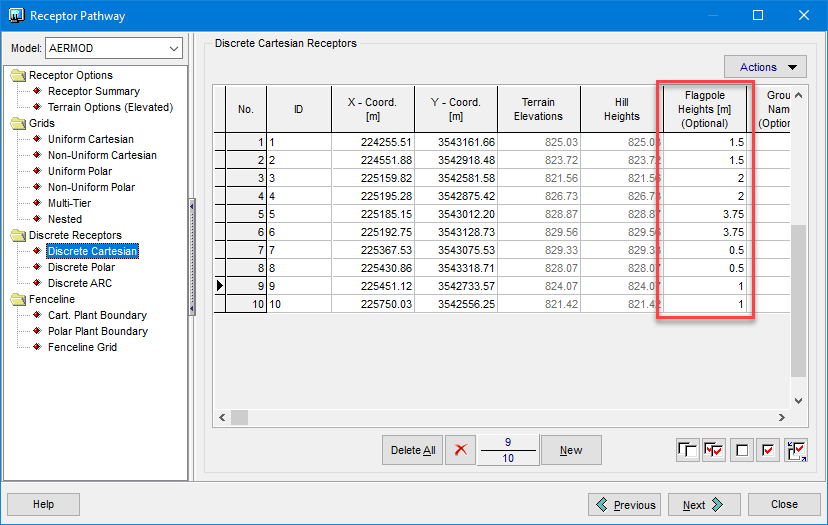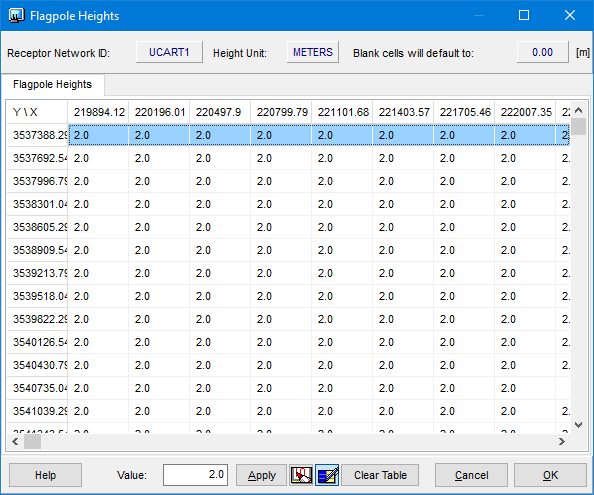Air dispersion models are only capable of calculating concentration at specific locations. These locations are called receptors. In the U.S. EPA’s AERMOD air dispersion model, concentration calculations at each receptor are done at the ground level as opposed to some height above ground. For this reason, output from the AERMOD model is often referred to as “Ground Level Concentrations” (GLCs).
The model does have the capability of measuring concentration at some height above ground, using the Flagpole Receptor Heights option. One example of using a flagpole receptor height is to calculate concentration at an average breathing height (e.g., 1.5 meters). To add flagpole heights to receptors in AERMOD View follow these simple steps:
Step 1: Open the Receptor Pathway options.
Step 2: In the Receptor Summary, select Yes for the Flagpole Receptors option. You can also specify a Default Height above ground for all receptors. The Default Height value is used on every receptor where a unique height is not specified.

Step 3: Select the receptor type (e.g., Uniform Cartesian, Discrete Cartesian, etc.) and apply a height.
To add a flagpole height to a specific discrete receptor, enter the desired height in the Flagpole Heights [m] (Optional) column of the Discrete Cartesian receptor options.

To add a flagpole height to a receptor within a gridded network, select the grid and click the Flagpole HeightsMark icon.



